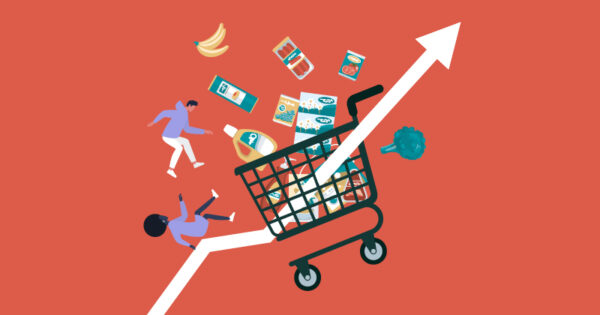Research has been published highlighting the pressures emergency food providers in Brighton & Hove are under and the food access needs of communities throughout the city.
The Emergency Food Network was established by the Brighton & Hove Food Partnership in 2013 to allow emergency food projects to collaborate, learn from one another and develop joint solutions. In 2023, this network comprises 51 projects operating from more than 60 locations across the city.
The Emergency Food Network Annual Report 2023 found that more than 6,400 people in Brighton & Hove rely on food banks, social supermarkets and community meal providers each week – a 25% increase on the previous year.
Almost a third of those accessing food banks and other emergency food services are children, while 65% need food support indefinitely.
Many food projects reported surplus food supply and financial and food donations dropping. This meant providers spent £15,800 each week to top-up dwindling stock levels, up 59% on 2022. Worryingly, almost half of emergency food providers reported not having enough money for the year ahead.
Councillor Leslie Pumm, Chair of the Equalities, Community Safety & Human Rights Committee, said: “I’d like to thank the Emergency Food Network and Affordable Food Network for their continued work supporting Brighton & Hove residents and communities affected by the cost of living crisis.
“These findings are very concerning, with increasing numbers of residents relying on emergency food projects for the foreseeable future. Meanwhile, food providers are navigating the challenge of supporting those in need as surplus supply and donations fall.”
Brighton & Hove City Council commissioned Bridging Change and Brighton & Hove Food Partnership to research the food access needs of Black and Racially Minoritised communities and refugees and asylum seekers in Brighton & Hove.
The key reasons for these communities seeking emergency food were low income (64%) and rising house and rent prices (34%) and the biggest barrier to accessing nutritious food was transport (30%), including the cost of public transport and distance to affordable shops.
Of those surveyed, 77% were unaware of other food services, with the process of getting advice, support or a referral particularly challenging for people where English was a second language.
The report includes 16 recommendations to be taken forward by Brighton & Hove Food Partnership and the council in partnership with providers of emergency food to better support Black and Racially Minoritised communities.
Read the Emergency Food Access report in full.
Councillor Pumm added: “We’re committed to doing everything we can to reduce inequality and tackle poverty exacerbated by the cost of living crisis, as outlined in the council plan for a better Brighton & Hove for all.
“We invited residents, businesses and partners to help shape the Brighton & Hove Cost of Living plan to address the wider challenges posed by the cost of living crisis.
“Since 2018, the Holiday Activities and Food programme has supported children and young people in receipt of free school meals throughout holiday periods.
“A Greater Brighton Food Plan is being developed to find long-term solutions to food insecurity throughout the city region while encouraging environmentally sustainable ways of producing food.
“One of the key aims of the City Downland Estate Plan is to provide an affordable and sustainable local food supply, through farmers, producers and community food growing.”
Last year, Brighton & Hove City Council launched an online cost of living hub to help residents struggling with money. The hub brings together advice, support and resources available for people across Brighton & Hove.
This includes information about food, with guidance about food banks, community food hubs, and low-cost food shopping; emergency food support; free school meals; and vouchers for parents and carers of children under the age of four.
If you’d like to help people in Brighton & Hove who are affected by the cost of living crisis, you can donate food, time or money to support local food banks and community food projects.
You can also join Brighton & Hove Food Partnership’s Food SOS campaign to support local food banks and raise awareness of rising demand and falling donations.













